What is the best back brace for scoliosis?
Scoliosis is a very common spinal condition, affecting millions of people worldwide. Though it affects people of all ages, scoliosis is typically first diagnosed and treated in childhood/adolescence. While many cases of mild scoliosis do not get worse, some patients may go on to require treatment – most often a back brace or sometimes surgery for very severe curves. In recent years, scoliosis-specific exercises have gained popularity as adjunct or stand-alone treatment (depending on the individual circumstances); however, bracing is still the primary treatment for growing adolescents at risk for curve progression. In the US, it’s estimated that 7 million people have scoliosis and that each year 30,000 children are fitted for a back brace. In this blog, we will compare the different types of scoliosis braces and explain why we think the Cheneau-Gensingen brace is the best back brace for scoliosis.
Soft braces vs. Hard braces
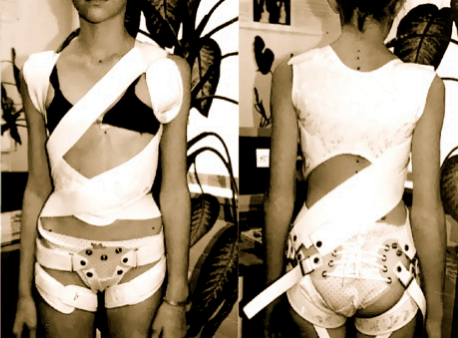
In recent years, the use of soft braces (often called ‘dynamic braces’) has spread worldwide as an alternative to the standard plastic back brace for scoliosis. These braces are typically made from a blend of elastic bands and straps that extend from the shoulder down to the legs. Despite the longer form/more complicated application, proponents of soft bracing often present this treatment as a more comfortable option that provides more mobility to the patient. While this certainly sounds like a nice idea, does a soft back brace for scoliosis actually work to stop/correct the condition?
A 2016 study by Gutman et al. compared the effectiveness of the SpineCor brace (soft brace) to the Boston Brace (most widely-used hard brace). The authors found that the SpineCor brace was associated with increased curve progression compared to the Boston Brace and that there was a trend of increased risk of requiring surgery when the SpineCor brace was used. Similar results were reported by Wong et al. and Guo et al. Despite controversy surrounding the SpineCor brace, many are drawn to the idea of soft bracing and ask my opinion on the matter.
I dislike the SpineCor brace based on personal and professional experience having treated numerous patients who wore a SpineCor and experienced rapid progression (despite total compliance) prior to treatment at Scoliosis 3DC®. As the father of a child who previously wore the SpineCor brace, with unsuccessful results (despite total compliance), my daughter’s experience is indelibly etched in my mind. Her experience had a lasting impact on me and eventually led to my journey of becoming a conservative scoliosis care provider.
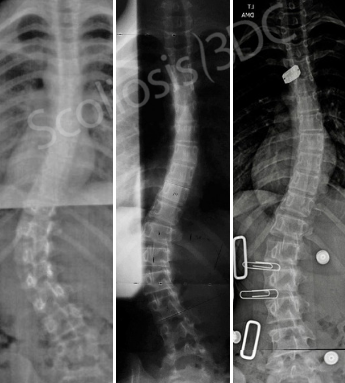
Before knowing what I know now, my wife and I blindly followed our daughter’s orthopedic doctor’s recommendations. The Spinecor brace was presented as a dynamic, free-movement brace. What we did not know at the time was that the SpineCor was unproven – many would argue it still is.
Another more recent alternative to plastic back braces is the ‘Scoliosis Activity Suit,’ sometimes called the ‘tornado suit.’ There are several major differences between the SpineCor brace and Scoliosis Activity Suit. The SpineCor brace anchors off the pelvis while the Scoliosis Activity Suit anchors off of the leg. As such, the Scoliosis Activity Suit is worn for fewer hours per day as the patient must be weight-bearing for the suit to work. Most physicians do not advocate soft back braces for scoliosis and research in this area is very limited. That said, ’hard’ plastic TLSOs appear to be the most tried-and-true, prudent option for patients needing a back brace for scoliosis.
Nighttime braces vs. fulltime braces
In some instances, your child’s doctor may recommend a nighttime brace. The premise behind nighttime bracing is to improve compliance, as some kids struggle with wearing a brace to school/during the day. A better in-brace correction may also be possible in the lying-down position due to less gravity/pressure on the spine. However, historically it has been difficult to determine what criteria is most important in scoliosis bracing (i.e. correction vs. brace wear time).
While a nighttime brace may seem like a kinder solution than a fulltime back brace for scoliosis, a recent multicenter study has shown that the effectiveness of bracing is positively correlated with brace wear time. In the past, doctors and researchers used self-reported compliance as a measure of brace wear time (often overestimated by the patient) but more recently, the use of thermal sensors on back braces is increasing both in clinic and in research which helps provide more accurate data on wear-time.
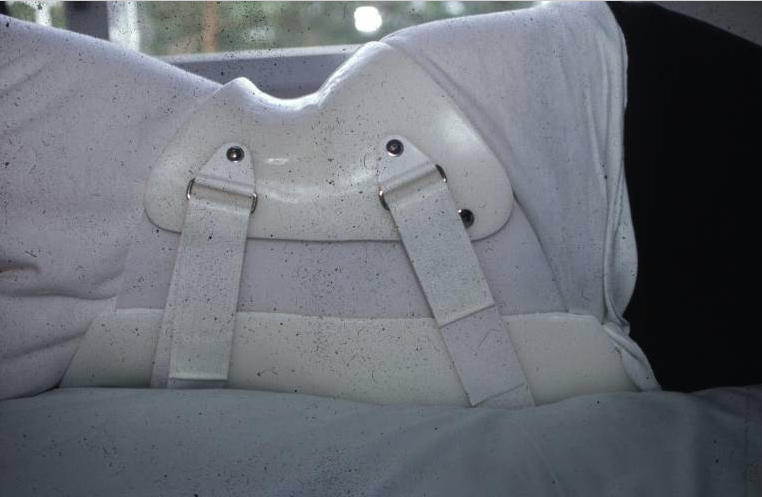
That said, nighttime bracing is typically only reserved for certain cases (for example, a milder curve on the cusp of a bracing recommendation). Nighttime braces are often referred to as ‘bending braces’ because the most commonly used nighttime braces, the Providence brace and Charleston brace, can only be worn in the lying down position due to their design which bends the primary curve. How effective are these braces?
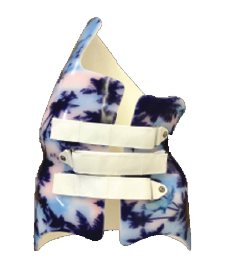
One study using the Charleston brace shows that for curves measuring 15°-25° (Risser 0), using a nighttime brace instead of observation (the typical recommendation by orthopedic surgeons) may reduce progression to the fulltime bracing threshold of 25°. In general, we advocate for proactive treatment rather than ‘observation’ for mild curves but for larger curves/curves at higher risk we advocate for fulltime bracing as it is still the gold standard.
Another important consideration for nighttime braces is the shape and design. As one study concluded, the Charleston brace (a bending-style brace), worsens the asymmetrical compressive loading in the compensatory curves. What does this mean? Simply put, scoliosis is a 3D condition. While most patients (and sometimes doctors) focus mainly on the largest curve, there are typically multiple curves in a scoliotic patient’s spine (usually 3 or 4). When the primary curve develops, the spine has to compensate for this and additional asymmetries are created (in a sort of vicious cycle). Thus, the name ‘compensatory curves.’ These compensatory curves typically go in the opposite direction of the primary curve. That said, while bending may help correct the primary curve, it is often at the detriment of the compensatory curves. Similarly, it is for this reason we don’t recommend exercise approaches for scoliosis that don’t take the whole spine into consideration (see our blog: yoga for scoliosis). A scoliosis spine simply isn’t that SIMPLE to fix with bending!
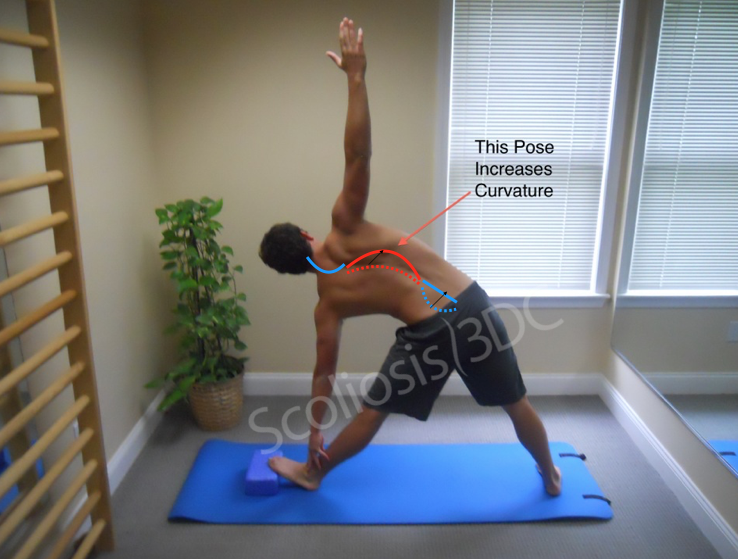
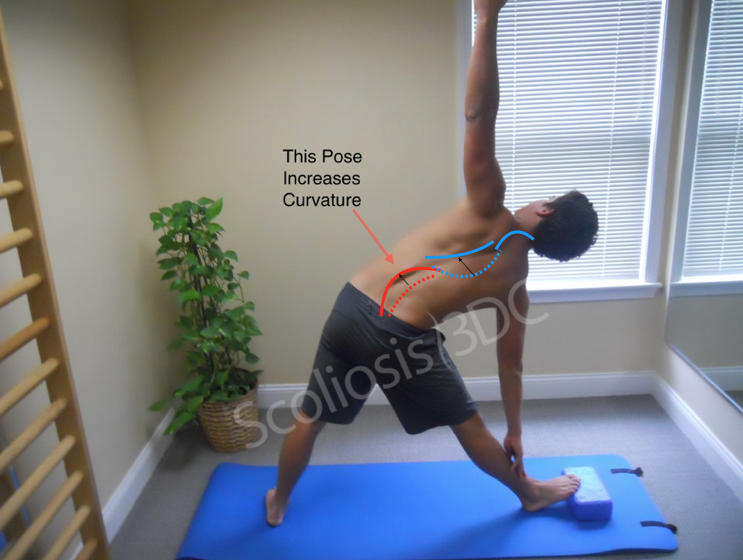
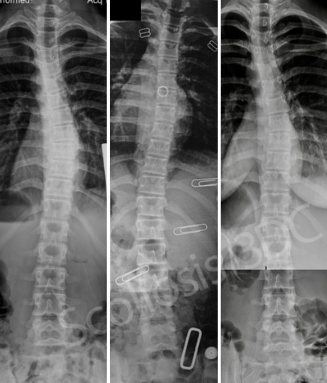
Consider also that if a patient’s curve progresses and they need to transition from nighttime bracing to fulltime wear, they need an entirely new brace! At Scoliosis 3DC®, we offer nighttime bracing for patients meeting certain criteria. However, our nighttime Cheneau-Gensingen brace can be worn in any position (lying down, standing, sitting, etc.) offering a major advantage over traditional nighttime braces. Also, the Cheneau-Gensingen brace doesn’t just bend the spine in one spot – it shifts curves specifically according to curve pattern.
The x-ray above shows an example of a 12-year-old adolescent with scoliosis who was braced with a nighttime Cheneau-Gensingen brace. Her initial curve (left) measured 25°. The middle x-ray shows overcorrection in the Cheneau-Gensingen brace. A follow-up x-ray (right) taken 2 years later measured 12°.
Symmetric braces vs. Asymmetric Braces
When it comes to rigid back braces, nearly all can be categorized as ‘symmetric’ or ‘asymmetric.’ With respect to treatment principle, there are many notable differences between symmetric and asymmetric back braces that parents should be aware of. That said, please keep in mind that new TLSO braces are being created all the time, and the braces mentioned in this blog may not be all encompassing.
The most commonly used symmetric-style braces today are the Boston brace and the Wilmington brace, though the Boston brace is now more widely used than the Wilmington. Fun fact – The Wilmington brace was first created after a patient refused treatment with the Milwaukee brace (a very cumbersome, now rarely-used brace that included a neck ring and throat mold!). While bracing for scoliosis can be tough for adolescents, patients can take comfort in the fact that back brace technology is improving all the time!

Symmetric back brace – aims to stop curve progression, compressive throughout, does not address all 3 planes of scoliosis.
Asymmetric back brace – aims to improve the curve (when possible), asymmetric design allows for ‘overcorrection’ and improved posture, highly corrective making it possible to brace larger Cobb angles, 3D design addressing coronal, transverse and sagittal planes, and voids/expansions for easier breathing (Cheneau braces allow for Schroth derotational breathing).
The concept of asymmetric bracing originated in Europe with Cheneau-style bracing. Hence, the most widely used asymmetric brace with the longest history is the Cheneau-style brace. However, within the Cheneau-style of bracing there is great variation. One issue with Cheneau bracing is that many people are now creating their own version of a Cheneau brace, which of course means that human error comes into play. Some practitioners use the name “Rigo Cheneau brace” for a brace of their own design. Some orthotists making a Rigo Cheneau use CAD/CAM design while some orthotists still rely on casting for the brace measurement process (less precise). There can also be great variation in the fitting process. It all depends on where you go and who you see.
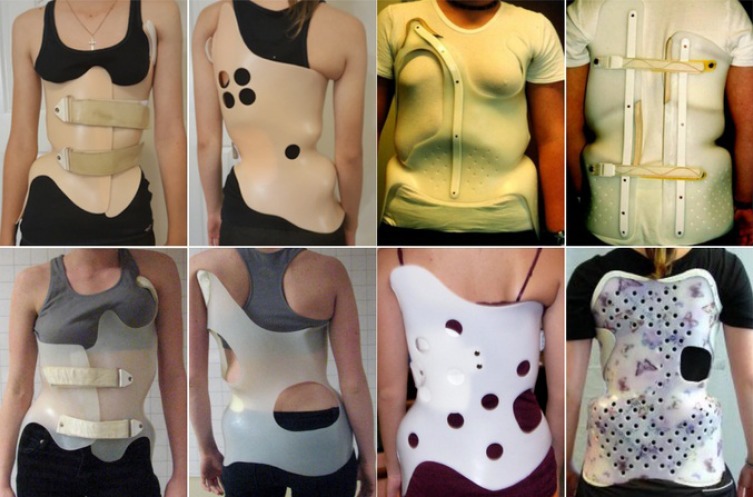
Each Cheneau-Gensingen brace is based on an individual’s unique curve pattern and customized to the patient. The 3D scan, x-ray, measurements and clinical presentation are all accounted for during the brace design. Each Cheneau-Gensingen is Schroth method compatible and based on the Augmented Lehnert-Schroth classifications, with strategically-placed voids rather than some other asymmetric braces that have seemingly randomly placed holes!
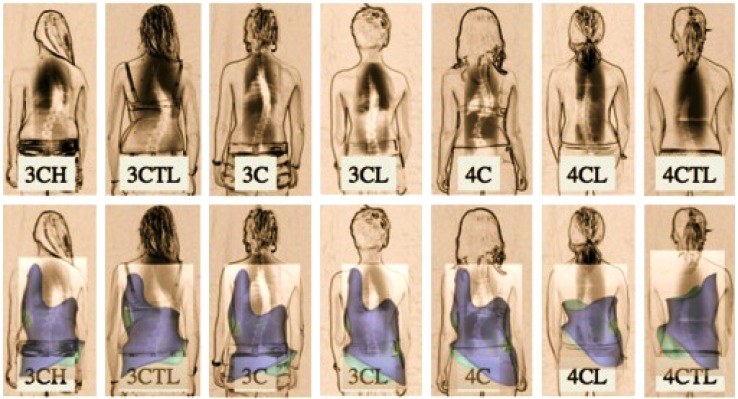
When choosing the best back brace for scoliosis, parents should also consider their child’s ability to wear the brace as compliance is crucial for treatment success. In our clinical experience, some feedback we’ve received about the Cheneau-Gensingen brace is that it is lighter and more tolerable compared to other rigid braces. When compared to symmetric braces like the Boston brace, we’ve seen several patients achieve better in-brace corrections in the Cheneau-Gensingen brace. Patients have also commented that it is ‘easier to breathe’ in the Cheneau-Gensingen and that they feel a corrective shift rather than an all-around squeezing feeling. The Cheneau-Gensingen is also easier for kids to put on and take off independently since it closes in the front.
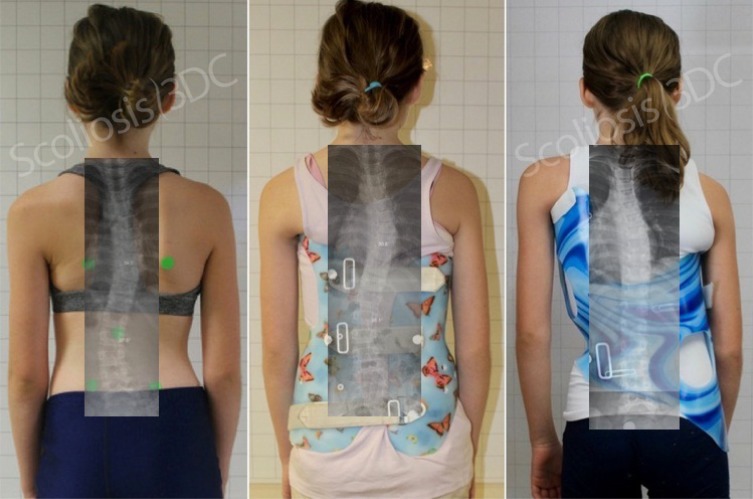
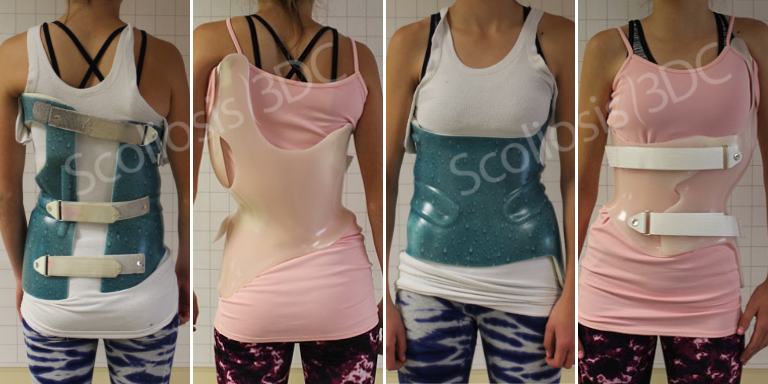
When compared to other asymmetric braces like the Boston Brace 3D, the Rigo-Cheneau, and Scolibrace, it’s clear that the Cheneau-Gensingen brace is made of less material. The Cheneau-Gensingen brace has one open hip in its design (allowing for overcorrection and increased hip mobility) and is always cut under the chest so that the breasts are not distorted during growth.
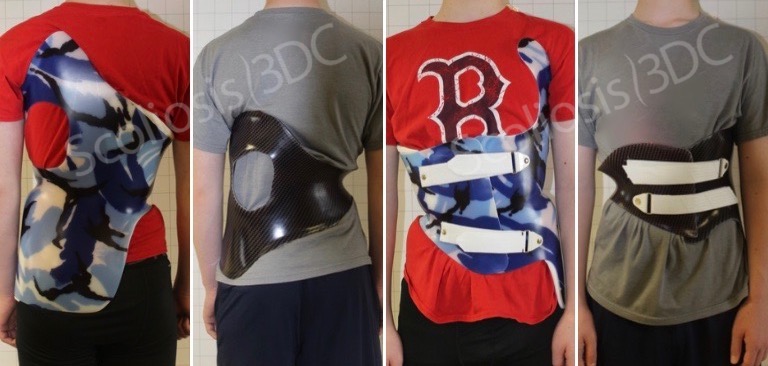
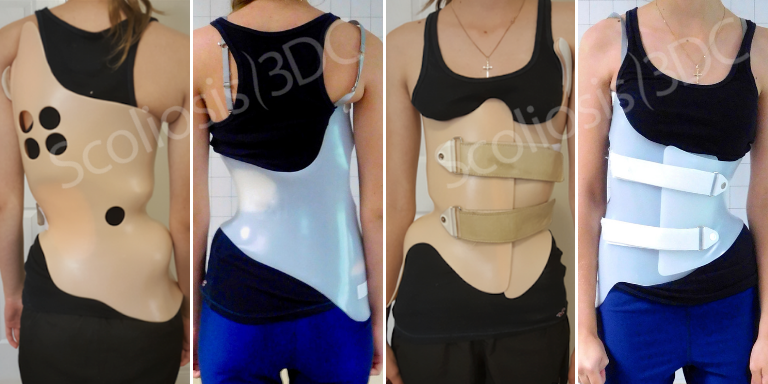
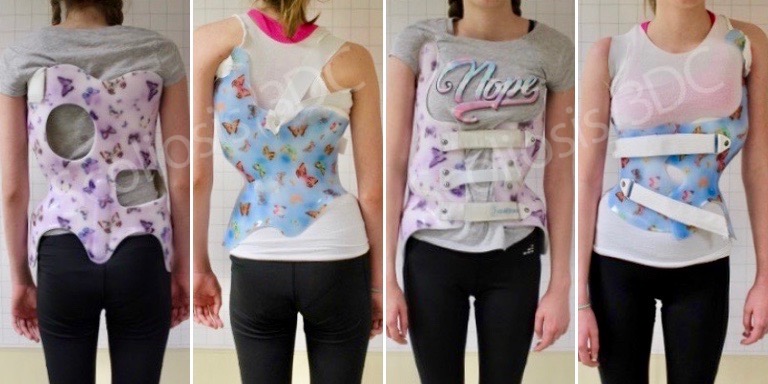
As asymmetric bracing is adopted by more and more practitioners and becomes more popular with patients, new “hybrid” braces will inevitably continue reaching the market. Buyer beware! Just because a back brace for scoliosis claims to be ‘asymmetric’ or ‘corrective,’ that doesn’t mean that the results match the ideals. Look for research and case studies in support of treatments you may pursue for you or a family member!
Adult Back Brace for Scoliosis
Adult scoliosis patients are increasingly seeking conservative scoliosis treatment options, whether it’s for pain, spinal support, postural improvement, or to prevent further progression. Though scoliosis bracing for adults is relatively new, in clinical practice it has shown promise for certain patients (when indicated). Often, adults (and even parents of adolescent scoliosis patients) inquire about over-the-counter braces or if there is a back brace they can purchase online. Our response: no back brace for scoliosis that is purchased online can give you the same effect as a custom-made product designed for your unique scoliosis curve(s)! While off the shelf braces or “posture correctors” may be helpful for other spinal conditions, scoliosis requires a more targeted approach.
Patients and parents who want to learn more about the Cheneau-Gensingen brace can contact us here!
Updated September 4, 2019

